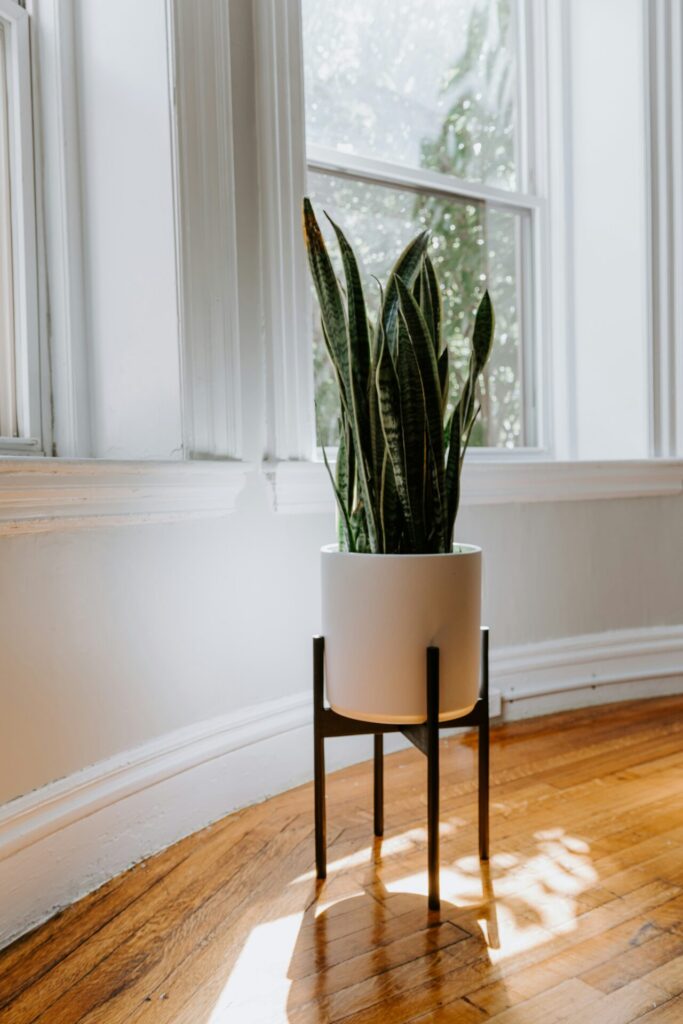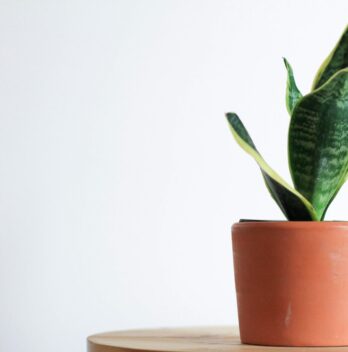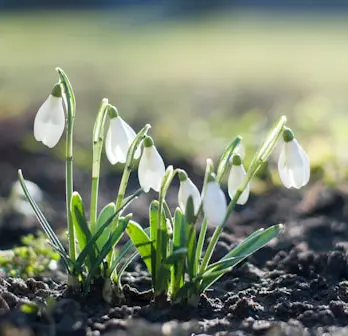Snake plants, also known as Sansevieria or “mother-in-law’s tongue,” are one of the most popular houseplants for beginners and seasoned indoor gardeners alike. Their hardy nature, air-purifying qualities, and striking appearance make them an excellent choice for any indoor space. However, even though snake plants are known for their low-maintenance qualities, they still need proper care to thrive indoors.
This guide on how to care for a snake plant indoors will cover everything you need to know about caring for a snake plant indoors, including light, water,
Why Choose a Snake Plant for Your Indoor Space?
Snake plants are not only aesthetically pleasing with their tall, sword-like leaves, but they also offer several benefits:
- Low maintenance: Perfect for those who might forget to water plants regularly.
- Air purification: Snake plants filter toxins like formaldehyde, benzene, and carbon dioxide from the air, improving indoor air quality.
- Durability: These plants can survive in various conditions, including low light and irregular watering.
Now, let’s dive into how to care for your snake plant indoors.
Easy Care Live Succulent Houseplants Potted in Nursery Pots, Potting Soil, Porch, Office and Home Decor, 8-Inches Tall
1. Choosing the Right Spot for your Snake Plant: Light Requirements
Snake plants are known for being adaptable to various light conditions, but understanding the best lighting will help your plant grow better.
- Indirect sunlight is ideal: Snake plants can tolerate low light conditions but thrive in bright, indirect light. Placing them near a window with filtered sunlight will encourage strong, healthy growth.
- Avoid direct sunlight: Prolonged exposure to harsh sunlight can cause the leaves to become scorched or yellow.
- Low-light tolerance: If your home has limited natural light, snake plants can survive in dimmer spaces, but their growth might slow. You can still place them in hallways or shaded corners; just don’t expect rapid development.
Pro Tip: Rotate your snake plant every few weeks so all sides get equal light exposure, preventing uneven growth.

2. Snake Plant Watering: How Much and How Often?
One of the top reasons snake plants die is from overwatering. While it’s tempting to water your plants frequently, snake plants prefer dry conditions.
- Water sparingly: Snake plants are drought-tolerant and can go for extended periods without water. A good rule of thumb is to water once every 2-4 weeks, depending on the season and indoor climate.
- Check the
soil : Before watering, ensure the top 1-2 inches of soil are dry to the touch. If thesoil is still damp, hold off on watering. - Avoid soggy
soil : Snake plants hate sitting in water. Always use a pot with drainage holes and discard excess water from the saucer.
Pro Tip: In winter, reduce watering frequency as snake plants grow slower during cooler months and require less moisture.
3. Soil: What’s the Best Mix for Snake Plants?
The right
- Use a cactus or succulent mix: These
soil types are formulated to drain quickly, which is ideal for snake plants. If you can’t find a pre-made mix, you can create your own by mixing regular pottingsoil with sand or perlite (2:1 ratio). - Ensure proper drainage: Always plant your snake plant in a container with drainage holes to prevent water from pooling at the bottom.
Pro Tip: Avoid heavy, moisture-retentive soils, which can lead to root rot—a common issue with snake plants if overwatered.
4. Temperature and Humidity: Creating the Perfect Environment
Snake plants are hardy and can survive in a range of indoor temperatures, but optimal conditions are needed for their thriving.
- Ideal temperature range: Keep your snake plant in a room between 60-85°F (16 and 29°C). They can tolerate cooler conditions, but temperatures below 50°F (10°C) may damage them.
- Avoid drafts and extreme cold: Keep your plant away from drafty windows, doors, or air vents, especially during colder months.
- Humidity is not a concern: Snake plants are not picky about humidity, making them perfect for homes with dry indoor air. However, if the air is arid, occasionally misting the plant can keep it looking fresh.
5. Fertilizing Your Snake Plant: Keep It Minimal
Snake plants don’t need much fertilization, but occasional feeding can boost their growth, especially during the active growing season (spring and summer).
- Use a balanced fertilizer: Opt for a general-purpose houseplant fertilizer diluted to half strength. Fertilize once a month during the growing season.
- Skip fertilization in winter: Snake plants enter a dormant phase during the colder months, and additional feeding isn’t necessary.
Pro Tip: Too much fertilizer can cause leaf burn, so it’s always better to under-fertilize than overdo it.
6. Pruning and Repotting: Keeping Your Snake Plant in Shape
Although snake plants grow slowly, they occasionally require some pruning or repotting to keep them in top condition.
- Prune as needed: Trim off any dead, damaged, or yellow leaves at the base. Pruning is generally minimal since these plants maintain their shape well.
- Repot every 2-3 years: Snake plants like to be slightly root-bound, so you don’t need to repot frequently. However, when roots start to break through the
soil or the plant becomes top-heavy, it’s time for a larger pot.
Pro Tip: When repotting, use fresh
7. Common Problems and Solutions
Even though snake plants are tough, they’re not entirely immune to problems. Here are some common issues and how to solve them:
- Yellowing leaves: Usually a sign of overwatering or poor drainage. Check the
soil , reduce watering, and ensure proper drainage. - Brown tips: Often caused by low humidity or inconsistent watering. Trim off the brown tips and adjust your watering schedule.
- Pests: Snake plants are rarely affected by pests, but if you notice small insects like spider mites or mealybugs, wipe the leaves with a damp cloth or treat them with a mild insecticidal soap.
Pro Tip: Regularly wipe down the leaves with a damp cloth to remove dust, which can block light absorption and slow growth.
Conclusion: Caring for a Snake Plant Indoors Made Easy
Snake plants are the perfect indoor plant for those seeking a beautiful, low-maintenance addition to their space. By providing the right light, watering sparingly, using well-draining
Now that you know how to care for a snake plant indoors, you can enjoy its air-purifying benefits and unique beauty without any stress!
Easy Care Live Succulent Houseplants Potted in Nursery Pots, Potting Soil, Porch, Office and Home Decor, 8-Inches Tall
FAQ: How to Care for a Snake Plant Indoors
1. How often should I water my snake plant?
Water snake plants every 2-4 weeks, letting the
2. What kind of light does a snake plant need?
Snake plants thrive in indirect light but can tolerate low-light conditions.
3. Can snake plants purify the air?
Yes, snake plants are known to remove toxins like formaldehyde from indoor air.
4. What type of
Use well-draining, sandy
5. How do I prevent root rot in my snake plant?
Avoid overwatering and ensure your pot has good drainage.







